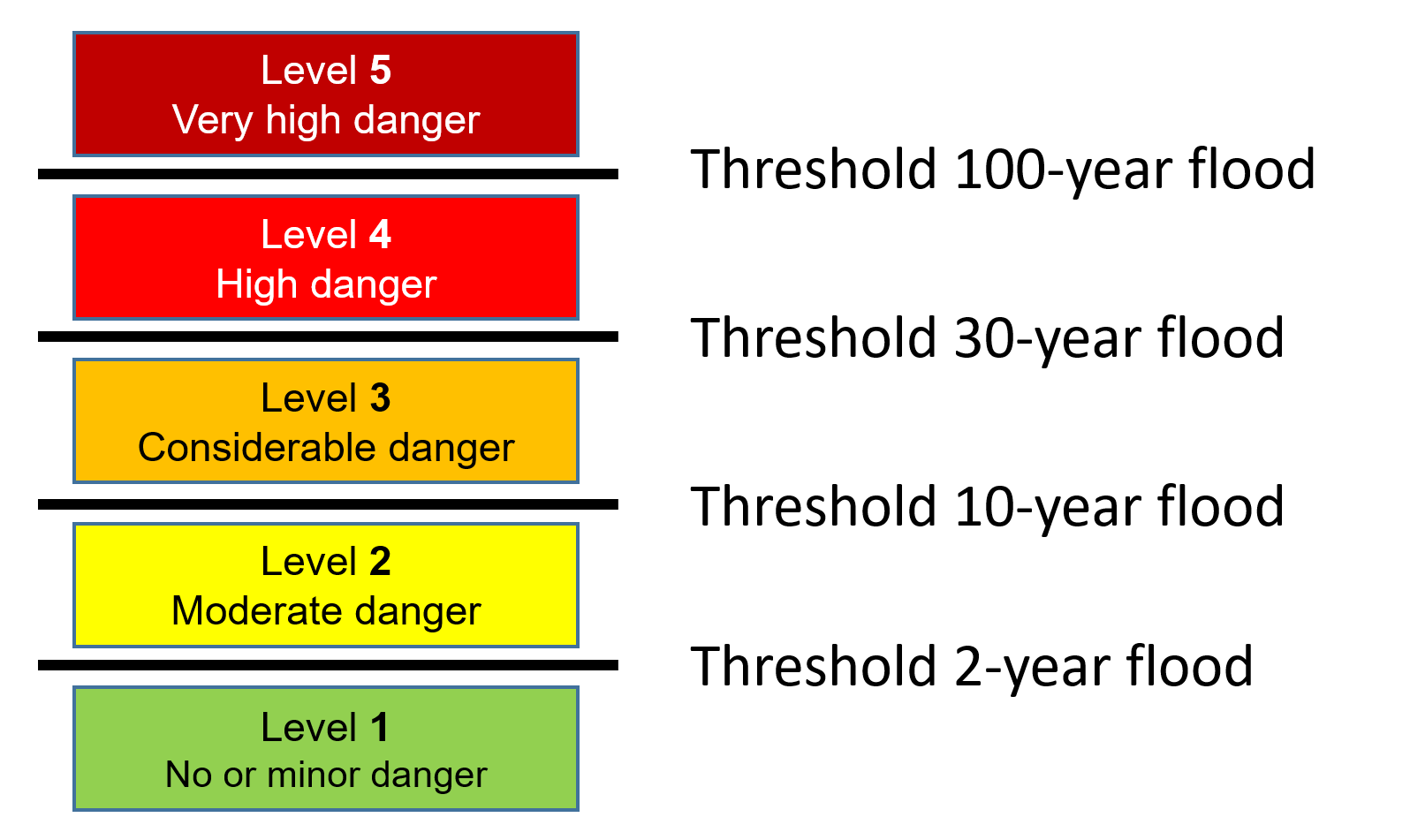 23.08.2024
23.08.2024
Flood hazard levels: New threshold values for federal monitoring stations on small and medium-sized bodies of water
The FOEN defines flood hazard levels for around 180 hydrometric stations in the federal monitoring network. There are five hazard levels. The threshold values between these hazard levels correspond to flood occurrences (annuality) every 2, 10, 30 and 100 years, i.e. the statistical return period of a flood. For example, the threshold for hazard level 2 corresponds to a flood that, statistically, can be expected to occur every two years (HQ2). The threshold for hazard level 3 is exceeded on average once every ten years (HQ10), etc.

The hazard level thresholds were redefined based on statistical evaluations which take into account the plausibility-checked annual maximums at the respective discharge measuring stations for the years up to and including 2020. The return levels (i.e. the discharges for the 2, 10, 30 and 100-year periods) are calculated using the generalised extreme value (GEV) distribution (see also Flood statistics (admin.ch)).
For some thresholds, the new values are very different from the previous ones. There are various reasons for this. The old threshold values were based on analyses dating back more than ten years. The underlying measurement series are now longer, with several major flood events having been added in some cases. The statistical evaluation method has also changed. It is now planned to review the threshold values approximately every five years.
At stations located on watercourses of national interest (e.g. large rivers or rivers that flow through several cantons) and at those where there is a certain amount of experience with flood risk, the threshold values will be adjusted on a selective basis and, if necessary, in agreement with the cantons. These stations are not included in the current update.
No systematic flood statistics are compiled for lakes. The threshold values for issuing warnings are defined in different ways. See 'The 5 flood danger levels and recommended behaviour'.
